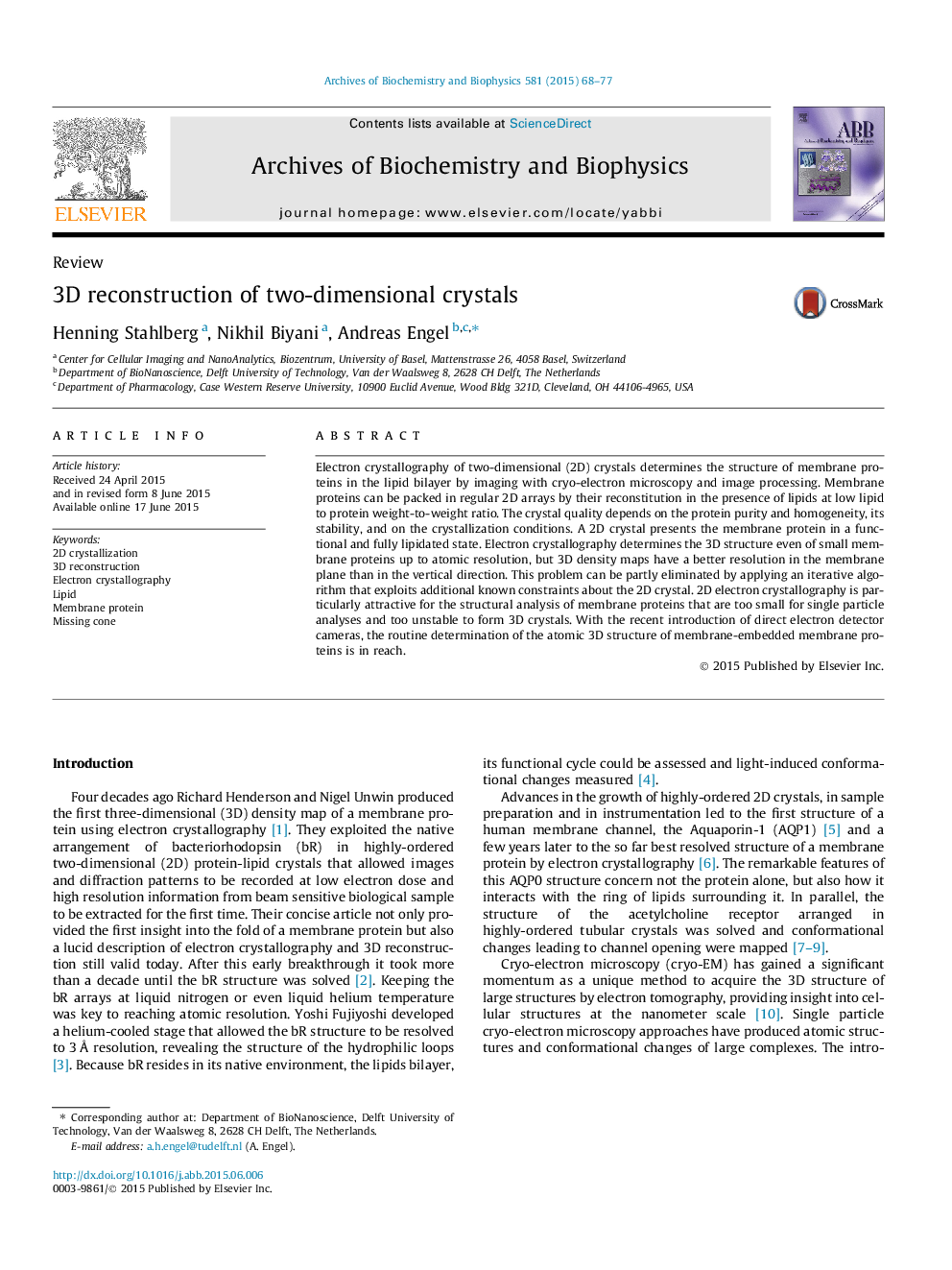| Article ID | Journal | Published Year | Pages | File Type |
|---|---|---|---|---|
| 1924891 | Archives of Biochemistry and Biophysics | 2015 | 10 Pages |
•2D crystals present the membrane protein in a functional and fully lipidated state.•Electron crystallography determines the atomic structure even of small membrane proteins.•Iterative algorithms allow the missing cone problem to be partly eliminated.•Routine structure determination of lipid-embedded membrane proteins is possible.
Electron crystallography of two-dimensional (2D) crystals determines the structure of membrane proteins in the lipid bilayer by imaging with cryo-electron microscopy and image processing. Membrane proteins can be packed in regular 2D arrays by their reconstitution in the presence of lipids at low lipid to protein weight-to-weight ratio. The crystal quality depends on the protein purity and homogeneity, its stability, and on the crystallization conditions. A 2D crystal presents the membrane protein in a functional and fully lipidated state. Electron crystallography determines the 3D structure even of small membrane proteins up to atomic resolution, but 3D density maps have a better resolution in the membrane plane than in the vertical direction. This problem can be partly eliminated by applying an iterative algorithm that exploits additional known constraints about the 2D crystal. 2D electron crystallography is particularly attractive for the structural analysis of membrane proteins that are too small for single particle analyses and too unstable to form 3D crystals. With the recent introduction of direct electron detector cameras, the routine determination of the atomic 3D structure of membrane-embedded membrane proteins is in reach.
Graphical abstractFigure optionsDownload full-size imageDownload high-quality image (226 K)Download as PowerPoint slide
